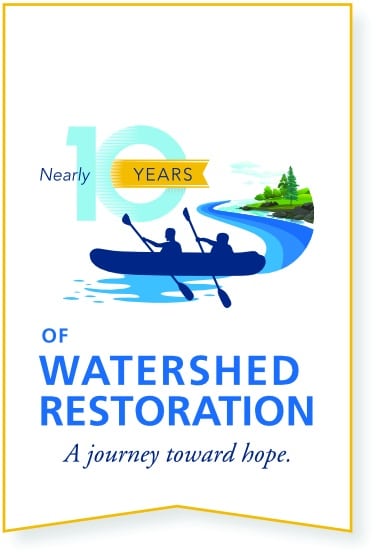
How Far We’ve Come and Where We’re Going to Help Farms Adopt Science-Based Solutions That Restore Healthy Streams
By Matt Ehrhart and Diane Huskinson
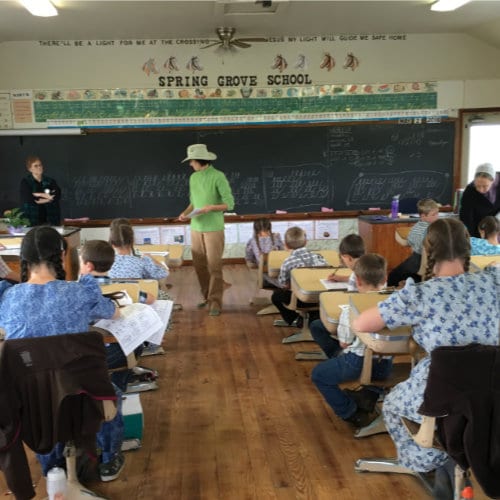
Ten years ago, Bern Sweeney, Ph.D., former executive director of Stroud Water Research Center, had an idea. A big idea. What if the Stroud Center added watershed restoration as a third action — in addition to scientific research and environmental education — in its mission to advance knowledge and stewardship of fresh water?
An initiative within the Stroud Center, focused not only on implementing the best possible watershed restoration but also on integrating that work into the science and education activities, would enable the kind of symbiotic collaboration that creates real change. While this is the same fundamental concept underpinning the nation’s land-grant universities, implementing it on a focused issue within a research institution that does not have the same silos and bureaucracies of a large university creates more freedom of opportunity.
Sweeney, Senior Research Scientist John Jackson, Ph.D., and others at the Stroud Center were no strangers to watershed restoration and collaborating with others on the science behind it.
The Stroud Center’s work to reforest a reach of White Clay Creek at its campus in Avondale, Pennsylvania, was one of the first riparian forest buffer plantings in the mid-Atlantic region, if not the nation. The use of tree shelters on the second generation of those plantings was the first documented use of tree shelters in the United States. Sweeney and Jackson collaborated with the Chesapeake Bay Foundation to monitor several streams in Lancaster County, Pennsylvania, that were being targeted in the 1990s to improve management practices on farms that affect water quality, including the planting of streamside forests.
Additionally, as many of the first tree plantings were failing to survive, the Stroud Center began studying how to best care for young forests, quickly becoming a national leader in the discussion on how to successfully plant trees and keep them alive.
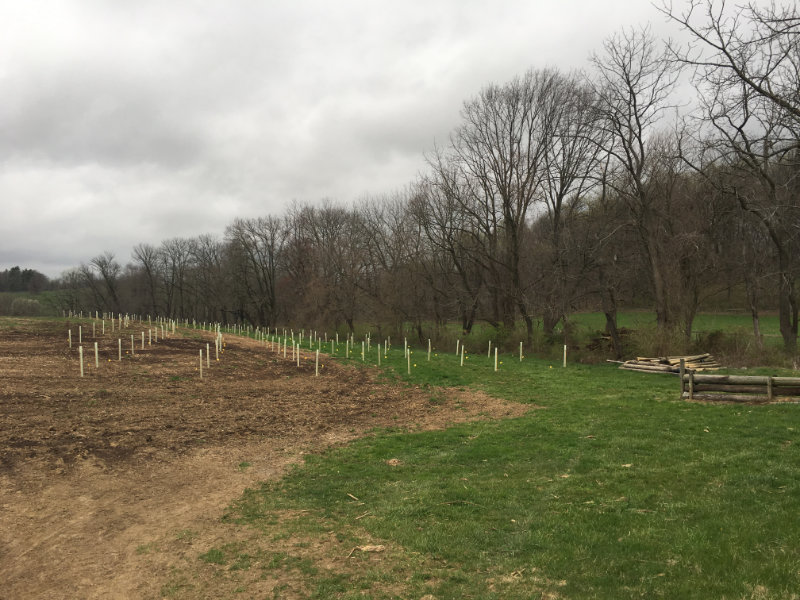
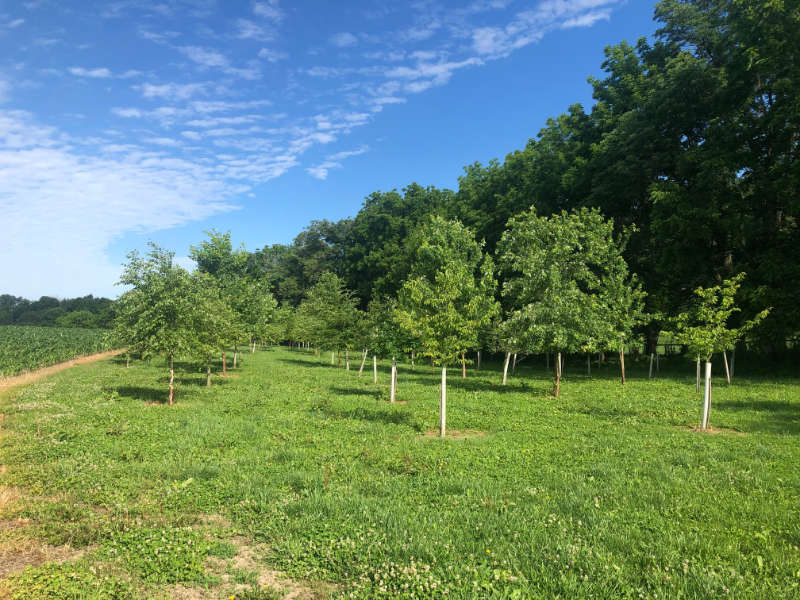
Nearly 10 years ago, the Stroud Center launched what would later be named the Robin L. Vannote Watershed Restoration Program, hiring Matt Ehrhart as director of watershed restoration and David Wise as watershed restoration manager. An initial grant from the National Fish and Wildlife Foundation kicked off restoration efforts in the farming communities of the Chesapeake Bay watershed.
Building on lessons learned from the prior collaboration with the Chesapeake Bay Foundation, the team recognized that to be most successful, they needed to address the entirety of a farm operation’s environmental impacts — a whole-farm approach. This focus has guided efforts in work with farms to combine funding from federal and state governments, private and foundation grants, tax credits, and state revolving loan funds into packages individually designed to meet the management, implementation, and financial needs of each farm.
As the watershed restoration team’s grant funding grew and their reach expanded, Ehrhart and Wise continued discussions with Stroud Center scientists on how to integrate their work more effectively. In 2014, the William Penn Foundation launched the Delaware River Watershed Initiative (DRWI). The DRWI was developed with eight target geographies, known as clusters, where grant partners primarily focused on aggregating either land protection efforts in headwater forests or watershed restoration in agricultural watersheds. This focus, and the support from the William Penn Foundation, enabled the Stroud Center and the DRWI partners to aggregate whole-farm watershed restoration efforts in small watersheds and to model, monitor, and evaluate the impact of that work in an unprecedented effort.
This funded opportunity for collaboration, not only between the science and research teams but also with partners from across the Delaware River watershed, accelerated the integration of our work.
This critical effort is enabling the Stroud Center to delve into long-standing questions about why, historically, watershed restoration work hasn’t led to the ecological outcomes we’ve hoped for. The search for a better understanding of the scope and scale required to make a bigger impact, as well as the lag time and other factors affecting restoration efforts, positions the Stroud Center as a leader in developing and disseminating this crucial information.
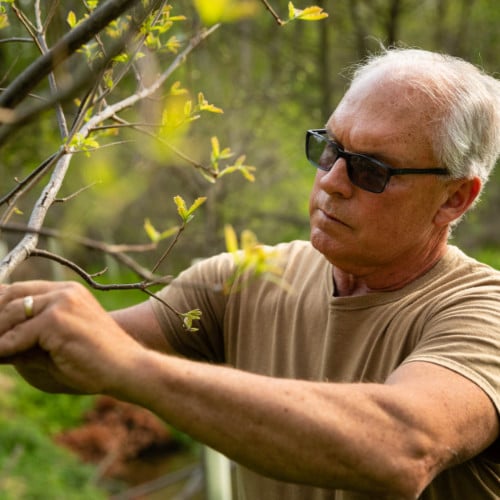
The Stroud Center’s work on issues surrounding soil health provides another window into the growing collaboration between the scientific research groups and the watershed restoration team. Recognizing how healthy farm soils improve climate resiliency, water quality, and farm profitability, the watershed restoration team has partnered with the Pennsylvania No-Till Alliance, an organization led by and consisting of active farmers. With the Stroud Center’s support, the alliance provides outreach and education, training, mentoring, and financial support to members.
Simultaneously, Stroud Center scientists have been working to better understand the mechanisms and functions of how no-till agriculture, cover crops, and the microbial communities of our soils lead to improved soil structure, drought resistance, and improved infiltration, as well as the management and decision-making necessary to achieve these improvements. This work was initiated with a Conservation Innovation Grant from the U.S. Department of Agriculture and continues with a long-term research collaboration with Rodale Institute, funded by the William Penn Foundation. The combination of efforts on the science, education, and implementation of soil health practices led to the Stroud Center being selected to lead the newly formed Pennsylvania Soil Health Coalition. Soil Health Coordinator Lisa Blazure and Watershed Restoration Coordinator Lamonte Garber spearhead this effort.
As the Watershed Restoration Program continued to grow in scope and scale, the list of external collaborators has grown. The program enjoys the rich contributions from private-sector partners, academic partners from across the country, nongovernmental organizations from the region and across the country, and federal, state, and local government entities.
While the Watershed Restoration Program has enjoyed great success in developing a broad funding base from private and government grant-making organizations, the contributions of individual donors have provided the program with the flexibility and nimbleness to grow and respond to new opportunities. In 2019 the team was humbled by the support of founding Executive Director Robin L. Vannote, Ph.D., and the program was formally named in his honor.
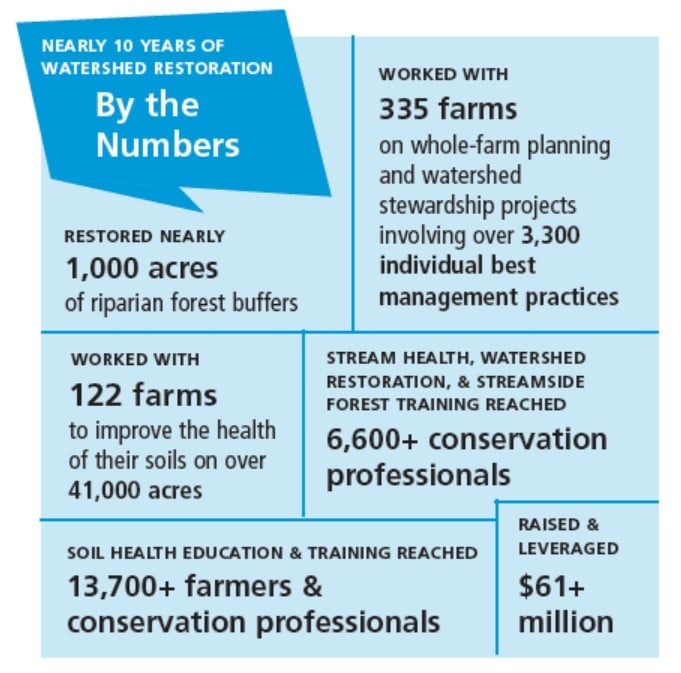
To date, the Watershed Restoration Program has restored nearly 1,000 acres of riparian forest buffers, worked with 335 farms on whole-farm planning and watershed stewardship projects involving over 3,300 individual best management practices, and worked with 122 farms to improve the health of their soils on over 41,000 acres. The Stroud Center raised and leveraged over $61 million to implement the work. Additionally, we’ve trained over 6,600 conservation professionals on issues of stream health, watershed restoration, and riparian forest buffers. Our soil health education and training events have reached over 13,700 farmers and conservation professionals.
As the watershed restoration team considers the opportunities and challenges ahead, we look forward to the growing internal collaboration with Stroud Center scientists and educators on issues such as the deposition of per- and polyfluoroalkyl substances, also known as forever chemicals, onto the agricultural landscape.
Even now, we are improving our understanding of how stormwater volumes and water quality from adjacent agricultural lands affect the resiliency of local communities, and we are improving approaches to watershed restoration in the region.
The team also has ongoing external collaborations with the University of Montana, Penn State University, and the University of Maryland that focus more on the human dimensions of this work and will provide insights into how best to work with farmers and nearby towns.
The first decade of the Watershed Restoration Program has proved the value in Bern Sweeney’s big idea, and we look forward to the insights, collaboration, and dissemination of ideas in the years to come that will assist our communities in protecting clean fresh water.
Learn more: For better success in planting and maintaining streamside forests, check out our helpful fact sheets and guides.
Thanks to our partners. We couldn’t do it without you.
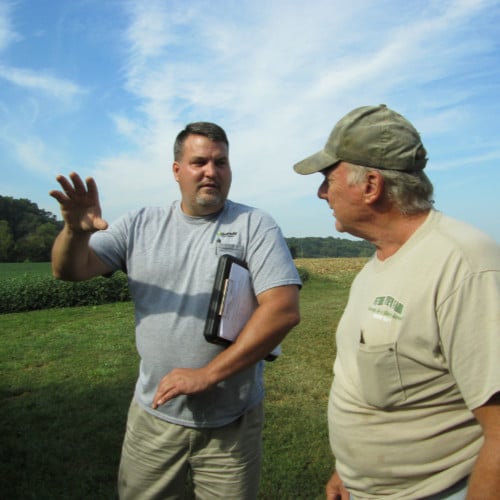
Alliance for the Chesapeake Bay
Berks County Conservation District
Berks Nature
Brandywine Conservancy
Brandywine Red Clay Alliance
Chesapeake Bay Foundation
Chesapeake Conservancy
Chester County Conservation District
Cover Crop Coaching, LLC
Hemp-Alternative
i2Capital
James River Association
Lancaster Clean Water Partners
Lancaster County Conservation District
Lancaster Farmland Trust
Meadow Springs Farm, Hicks Brothers, LLC
Mowery Environmental, LLC
National Fish and Wildlife Foundation
Octoraro Native Plant Nursery
Partnership for the Delaware Estuary
PennAg Industries, Inc.
Penn State Ag and Environment Center
Penn State Cooperative Extension
Pennsylvania Dept. of Environmental Protection
Pennsylvania Dept. of Conservation and Natural Resources
Pennsylvania No-Till Alliance
Propagate Ventures
Red Barn Consulting, Inc.
Rosetree Consulting, LLC
TeamAg, Inc.
The Nature Conservancy
Trout Unlimited
Trust in Food
University of Montana
Upper Susquehanna Coalition
USDA Farm Service Agency
USDA Natural Resource Conservation Service
William Penn Foundation
Plus the many farmers and landowners who
partner with us!
Stroud Water Research Center publishes content like this in its annual report to celebrate the impact we make each year, while recognizing that our work is unfinished. To protect clean fresh water — a basic human right — we rely on the support of people like you. Please donate today to keep our fresh water clean.



